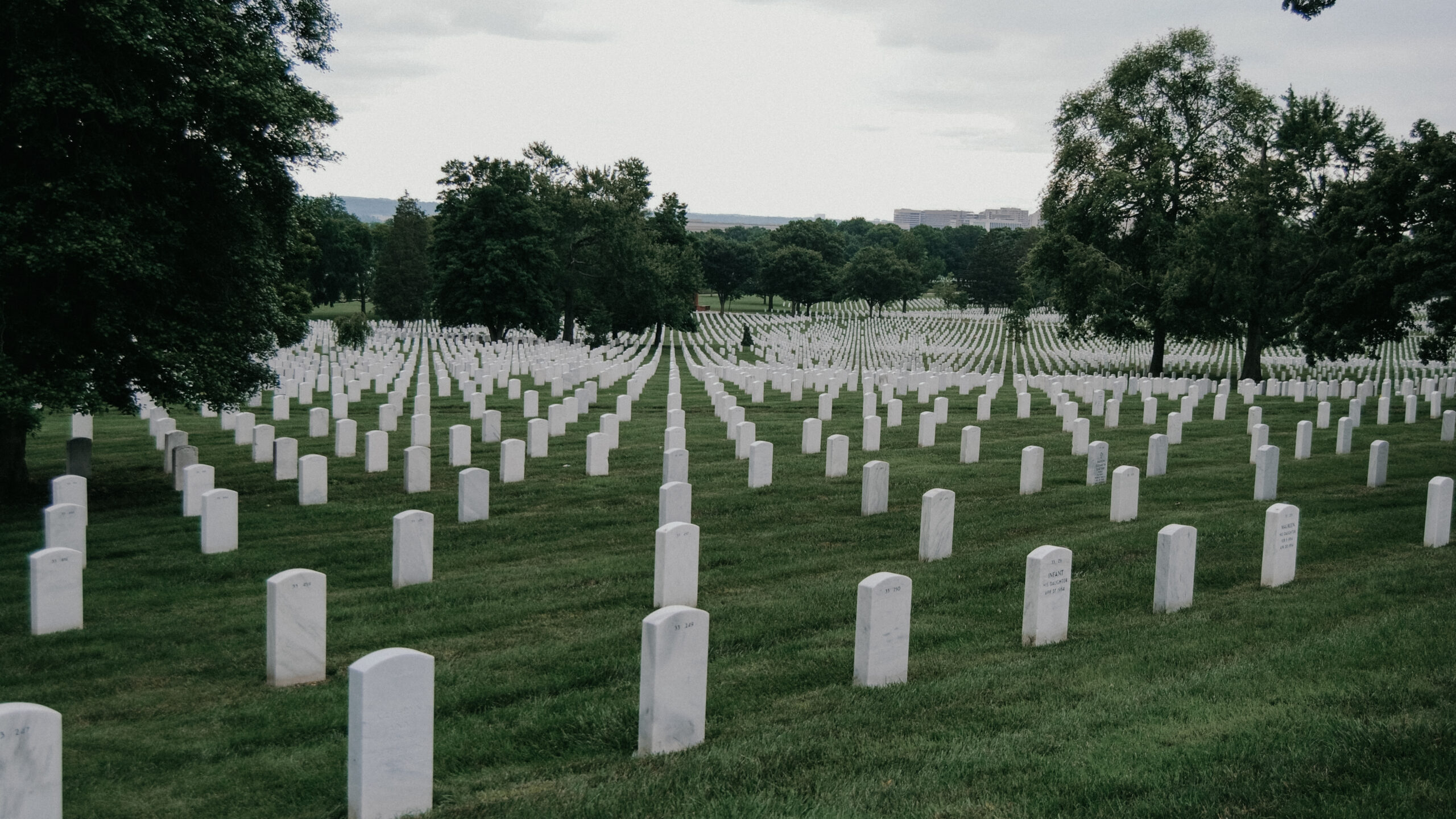Every November, we turn our attention to the future by honoring those who have reached the goal of baptism (All Saints), by interceding for those still on the way (All Souls), and by longing for the eschatological completion of God’s plan in the new creation (Christ the King / Advent). Many countries also observe a civil holiday on November 11 to honor those who served honorably in the armed forces, which in America is called Veterans Day. Why on this day? René Girard’s mimetic theory and Raymund Schwager’s dramatic theology can help us discover the deeper significance of this date.
For centuries on November 11, the Church has commemorated Martin of Tours, a saint who exemplifies a path of discipleship free from violence. Then in 1918, a civil commemoration marking the end of the First World War was added—namely, the armistice, which instantiates Girard’s concept of the katéchon (from 2 Thessalonians 2:6–7). Over three decades and in tandem with his friend the Innsbruck theologian Raymund Schwager, Girard articulated a powerful analytical tool to explain the problem of violence. Briefly put, he discovered mimetic desire, the scapegoat mechanism, and the evangelical subversion of human culture.
First, Girard noticed that desire is mimetic, meaning that while all human beings desire, what we desire, and why we desire it, is often elusive. Girard first learned this insight from novelists whose works told stories about mimetic desire leading to conflict over a desired person or object. Mimetic rivalry tends toward violence and as these interpersonal conflicts multiply, they threaten to consume the community unless checked.
Second, this checking of the violence Girard calls the scapegoat mechanism: limited violence prevents unlimited violence—the group finds someone to blame for their divisions. For it to reconcile the community, the community must unanimously believe in the guilt of the scapegoat. If there is any doubt, the scapegoat mechanism will not work, and the crisis will simply intensify. Moreover, the selection of the scapegoat is not a rational process; it does, however, follow its own rules in suggesting candidates—namely, those on the margins such as strangers, the deformed, or even the king.
Peace cannot be achieved merely by an armistice . . . it must be a graced way of being human—namely, to become like Christ.
When the scapegoat mechanism succeeds (it must be recalled that it is entirely hidden from the community—Girard calls this méconnasissance, a misrecognition of what really happened), it gives rise to the foundations of culture: ritual sacrifice (to repeat the reconciling event), myth (to recount the story from the group’s point of view), and prohibition (to forestall mimetic behavior). These constitute the first of many institutions—katéchon—that contain or dissipate unlimited violence through limited violence. Girard further claims that the scapegoat explains the origin of the gods. The one who caused the division once expelled, he argues, is perceived to be the source of peace, thus suggesting a supernatural being. Such a divinity and the culture that issues from it he calls, collectively, the “sacred.”
Finally, it is reasonable to ask, how do we know anything about the scapegoat mechanism if it is unknowable? Girard contends that the Passion narratives have effectively demythologized the scapegoat mechanism because they tell the story unambiguously from the point of view of the victim, Jesus, whose innocence is never in doubt. For Girard, the Paschal Mystery is an anthropological revolution that subverts the sacred, the foundation of human culture. (It is also a theological revolution because it replaces the human-made sacred with the God-revealed holy.) While the empty tomb and the Resurrection appearances only touched a few individuals, through Jesus’ disciples, this truth has transformed the world. Indeed, the influence of the Gospel is accelerating, he argues, bringing the human race to a crossroad: either embrace Jesus Christ fully or face inevitable self-annihilation. The apocalyptic, which once appeared absurd, is today entirely realistic thanks to science and technology. While this summary does not do justice to the brilliance and creativity of mimetic theory, it suffices for our investigation of what lies behind Veterans Day.
Effective on the morning of the eleventh day of the eleventh month at eleven o’clock, the feast of St. Martin, the Entente and German commanders signed the armistice at Compiègne, a city associated with the betrayal of St. Joan of Arc and the fourteen Carmelite martyrs executed during the French Revolution’s Reign of Terror. The armistice brought a halt in the war that made possible the subsequent treaties, which in turn constituted a new order with a modernized katéchon.

The treaties included “war guilt clauses” that assigned blame (scapegoats) for the war by dividing Europe between the innocent (Triple Entente) and guilty (Triple Alliance). The treaty-stipulated territorial concessions and reparations not only reinforced the message that only one side was guilty and the other innocent, but such requirements may also be seen as a modernized notion of sacrifice. Even if the loss of territory is considered to be a one-time sacrifice, the reparation payments were ritualized as repeated events: the final installment of which was paid on October 3, 2010. Added to the myth of the guilty party and the financial and territorial sacrifices were the prohibitions on the deployment of troops west of the Rhine, on Germany’s maintenance of an air force, and strict limitations on defense expenditures, all of which were ordered to help to avoid future conflict.
While mimetic theory illuminates the anthropological significance of the armistice, Schwager adds a theological level through dramatic theology, which he devised in a dialogue between Catholic theology and mimetic theory. In order to find a way to attain a peace founded on an adequate concept of justice that escaped the seemingly inevitable cycle of grievance, accusation, and retribution, Schwager sought to reinterpret sacrifice, divine wrath, judgment, and apocalypse. Jesus’ own response to the resistance, which he encountered to his proclamation of the Kingdom, became Schwager’s model. First, Jesus reinterpreted divine wrath as a projection on God and divine judgment as self-judgment, which is the logical and ineluctable consequence of sin. With the failure of this first strategy, Jesus willingly suffers the sin of others (Passion) to reveal a new vision of God as free from all human violence (Resurrection) and a new way of being human—namely, a new community, the Church, gathered by the action of the Holy Spirit (Pentecost), and whose ultimate fulfillment is eschatological.
In Girard’s and Schwager’s view, therefore, peace cannot be achieved merely by an armistice (the temporary cessation of violence) or even through peace treaties that erect a new katéchon; it must be a graced way of being human—namely, to become like Christ. Armistice Day commemorates a partial solution to the problem of violence. In this, it symbolizes all human attempts to use violence to control violence. In comparison with limitless violence, this is undoubtedly praiseworthy. But the choice, which Jesus proposes, is not necessarily between good or bad, but rather between good and better, to which we turn in the life of St. Martin.
Read more in “Behind Veterans Day—Contrasting Paths to Peace (Part II),” coming soon.
